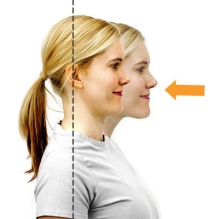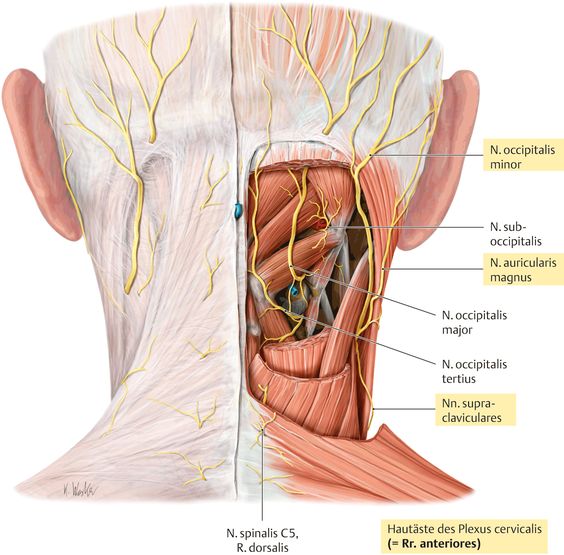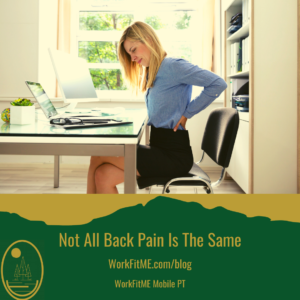In this week’s blog we are going to move up the spine to the neck and talk about a common problem that, in my experience, takes way too long to be properly diagnosed: headaches and migraines. Most of the clients I have seen that present with headache pain or migraines have had them for a long time and have seen multiple medical professionals who give them treatments that provide only minimal and short term relief. If common medication used for migraines does not work for you and other causes of migraines and headaches have been ruled out, the problem may actually be coming from your neck.
The reason migraines and headaches are difficult to diagnose is there are a lot of factors that can cause them. Stress, dehydration, blood flow issues, neurological issues, and neck and spine issues are all very closely related and can be a source of headache or migraine pain. A physical therapist can determine if your headache or migraine pain is coming from your neck through a thorough examination and treatment session. Once certain neurological and blood flow issues are ruled out, treatment of the neck, base of the head, and spine can be very effective at treating headaches and migraines. This is true even if you have tried other forms of relief with only slight changes in symptoms and the headache or migraine pain has been around for a long time.
Causes and Symptoms
So lets look at how the neck can cause headaches and migraines and then talk about ways of relieving them. The area we will focus on is where the head meets the neck, an area we call the subocciptal region. The first two vertebra of your neck and the base of the skull all meet here. There are a series of small muscles on each side of the neck and head that help us move the head on the neck. Nerves from the spinal cord come out of the spine and through these muscles on their way to the head where they give our head sensation. Compression or irritation of these nerves can cause the different types of symptoms that come from headaches and migraines. Pain on one or both sides of the head, pain that radiates from the base of the skull to the forehead, pressure and pain in the eyes, a “ram’s horn” pattern of pain on the side of head, sensitivity to light, and jaw pain can all come from nerve compression or irritation between the top of the neck and the base of the head. All of our treatments will focus on this area. With good balance between mobility and stability we can be very successful at relieving headache and migraine pain and prevent it from happening or returning in the future.
3 Tips to Relieve Headaches & Migraines
1. Desk Ergonomics and Body Mechanics
A majority of clients I see with headaches and migraines work at a desk. If the desk ergonomics AND the client’s body mechanics are not properly set up for the client specifically, working at a desk can lend itself to certain areas of tightness and weakness that lead to pain from headaches and migraines. Making sure the work space allows you to be upright with your arms supported and the computer monitor at the correct height will help tremendously. Ergonomics alone will not change this. Having proper body mechanics and movement patterns assessed to personalize these changes for you is key. Check out our blog on improving home office ergonomics for more tips to incorporate at home or in the office at work.
2. Upper Neck Mobility
The slouched and forward head positions tend to cause tightness in the first two vertebra in the neck leading to nerve irritation or compression at the base of the head. Improving the mobility in this area can decrease tension and stress on the nerves that cause migraine and headache pain while also getting us out of positions that increase that tightness and tension. A simple exercise called a chin tuck can improve both the mobility of the upper neck at the base of the head and strength and stability in the deep stabilizing muscles in the front of the neck.

Make sure the entire head goes straight back. We aren’t looking down or up. Just brining the head straight back. It is a very small motion. Only go until the start of a stretch is felt at the base of the head. Hold each repetition for 3-5 seconds and complete 30 times. This can be done 3 times a day.
3. Postural Endurance
Again, finding the balance between mobility and stability is key for preventing or relieving any area of pain, especially when it has been happening for a while. This is an area that should definitely be personalized by a physical therapist to address the correct musculature in the best way possible for YOU and your condition. However, activating the lower trapezius muscle can be very beneficial and can be done without weights or equipment. Check out this video for the best way to activate this muscle.
Treatable and Preventable
With any area of pain, the key is to relieve it AND prevent it from returning. Even better, lets prevent it from happening at all. Finding the correct areas that need to be more mobile and the correct areas that need to have more strength and endurance to address the imbalance that led to pain, or could lead to pain, is crucial. Headache pain and migraines are no different and, if the neck is identified as the culprit, are very treatable. Contact us today to for a full assessment of your headache pain or migraines and see how physical therapy can help you work pain free and live pain free.





